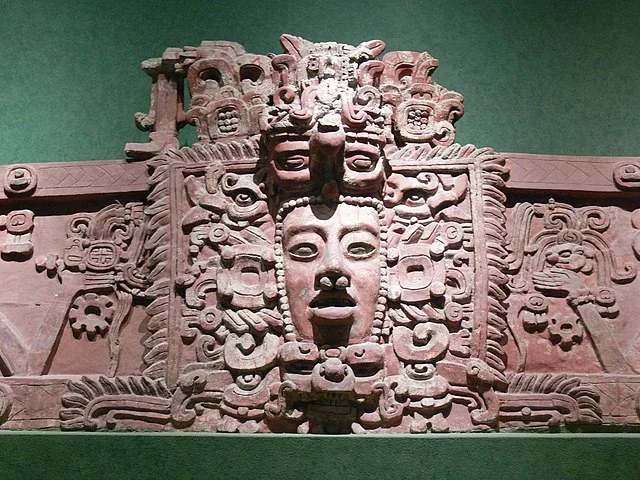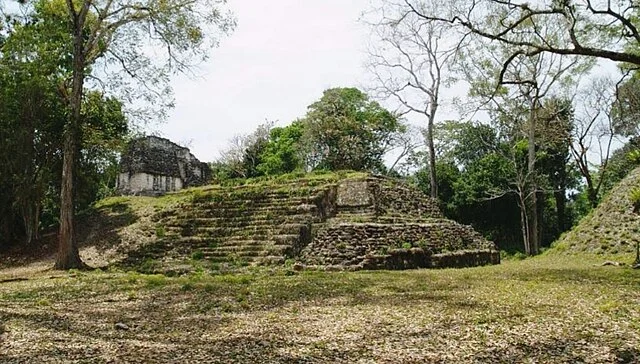Naachtun is an ancient Maya city located in northern Guatemala, approximately 60 miles northeast of Tikal. The city dates back to around 500 BC and remained an important site until its decline around AD 950. It was situated in the Petén Basin, a region renowned for its dense tropical forests and prominent Maya cities. Naachtun is significant for its role in the rivalry between the powerful city-states of Tikal and Calakmul, which fought for dominance in the region.
Get your dose of History via Email
Discovery and Excavation

Naachtun was first documented in 1922 by archaeologist Sylvanus Morley during a Carnegie Institution expedition. The site remained relatively untouched for many years due to its remote location, making excavation efforts challenging. Major archaeological work began in the 1990s, providing scholars with valuable insights into Maya urban development, political alliances, and architectural styles.
Political Importance
Naachtun’s location played a key role in its political history. The city sat at a strategic point between the warring states of Tikal and Calakmul, which were two of the most powerful Maya polities during the Classic Period (AD 250–900). The rivalry between these two cities, known as the “Star Wars” conflict, deeply impacted the political landscape of the region. Naachtun likely shifted alliances multiple times between Tikal and Calakmul, benefiting from its position as a middle ground. This made the city a site of interest for archaeologists studying Maya geopolitics.
Urban Layout and Architecture
The city of Naachtun covered an area of about 3.5 square miles. The urban core included plazas, palaces, pyramids, and residential complexes. The site is divided into two main sectors—North Group and South Group—connected by a central causeway. Researchers have found evidence of complex water management systems, suggesting that the city’s rulers implemented sophisticated methods to support its population. Additionally, the presence of large public structures indicates that Naachtun served as a major political and ceremonial center.
The architecture of Naachtun reflects both early and late Maya styles, indicating continuous occupation over several centuries. The buildings feature intricate stone carvings and stucco decorations, displaying the skill of Maya artisans. Some structures show clear influence from Tikal, while others bear similarities to Calakmul, reflecting the city’s changing political alliances.
Stelae and Inscriptions
Naachtun is known for its well-preserved stelae, which provide crucial information about its rulers and political connections. These stone monuments were erected to commemorate significant events such as victories in battle, political alliances, or the reigns of important kings. The inscriptions on these stelae are written in Maya script, a complex hieroglyphic system. Deciphering these texts has helped researchers piece together the city’s history and its role in regional conflicts.
One notable stela, Stela 24, dates to AD 771 and depicts a ruler of Naachtun dressed in elaborate regalia. The inscription suggests that Naachtun maintained a degree of autonomy despite the pressures from neighboring city-states. This stela, along with others at the site, provides valuable insight into the political and social dynamics of the Maya lowlands.
Decline and Abandonment
Like many other Maya cities, Naachtun experienced a decline during the Terminal Classic period (AD 800–950). The reasons for its abandonment are likely multifaceted, involving environmental degradation, overpopulation, and prolonged warfare. As the Maya civilization in the region collapsed, Naachtun was gradually abandoned. The site was eventually reclaimed by the surrounding jungle, preserving much of its architecture for future discovery.
Conclusion
Naachtun remains an important site for understanding the complex history of Maya civilization. Its strategic location and shifting political alliances provide valuable insights into the broader conflicts between Tikal and Calakmul. Ongoing excavations continue to shed light on its urban development, architecture, and role in the Maya world. Naachtun serves as a testament to the achievements and challenges faced by ancient Maya society.
Source:

